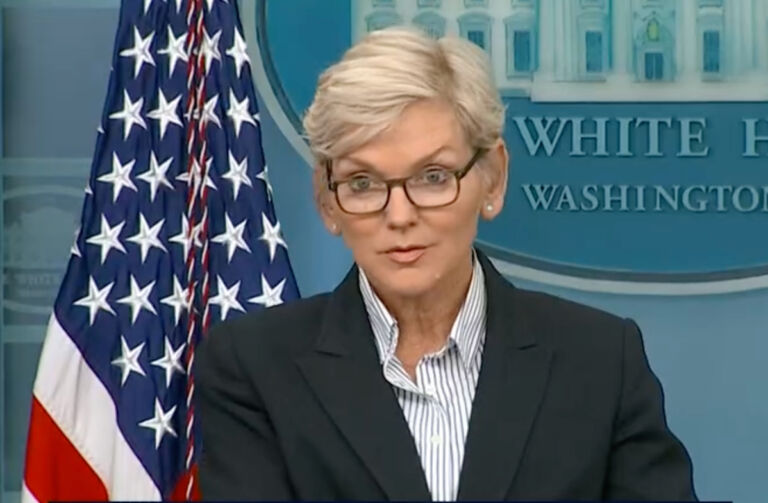A couple of years ago, I asked whether Gov. Roy Cooper could finally support nuclear power, since even Pres. Joe Biden was. Our existing nuclear power plants have pulled off a “rare feat in politics”: “Nuclear produces zero emissions while at the same time being the most reliable and lowest-cost source of electricity. It checks all the boxes.”
I had to ask for several reasons. Nuclear power was conspicuously absent from the Cooper administration’s initial “Clean Power Plan,” but after weathering the bulk of public comments questioning its absence, the Department of Environmental Quality (DEQ) answered with what former DEQ Secretary Donald R. van der Vaart called “a straightforward, categorical rejection of nuclear power.”
Our nuclear power plants produce zero emissions while at the same time being our most reliable and lowest-cost source of electricity.
The North Carolina Utilities Commission’s recently announced initial Carbon Plan wisely would extend our nuclear fleet’s licenses and look into adding more. The Locke Foundation’s Center for Food, Power, and Life had proposed a model “Least Cost Decarbonization” scenario to the Utilities Commission that would ultimately rely primarily on nuclear and storage by 2050 to achieve the goal of “carbon neutrality” by 2050.
Model Least Cost Decarbonization Portfolio: Total Installed Capacity by Year
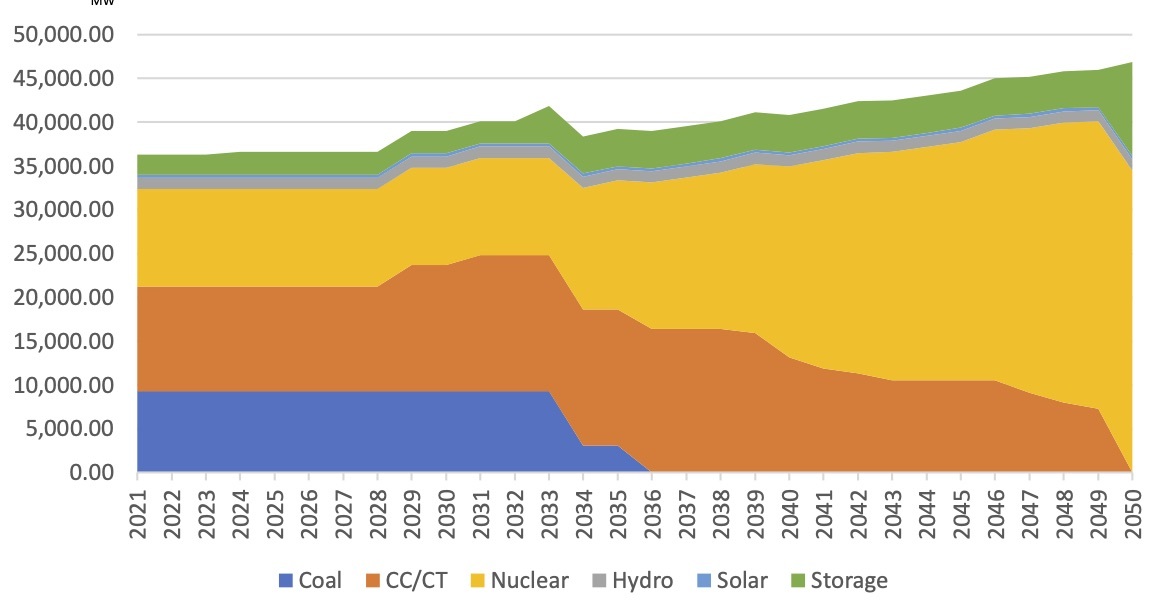
The reliability of our nuclear power was on major display during the unprecedented Christmas Eve blackouts of 2022. While freezing of some instrumentation lines kept coal and natural gas facilities from producing as much power as expected, and while solar didn’t produce at all except for the few hours when the sun was shining (which occurred after peak demand), nuclear’s productivity was so steady one might mistake it for the upper bound line of the chart:
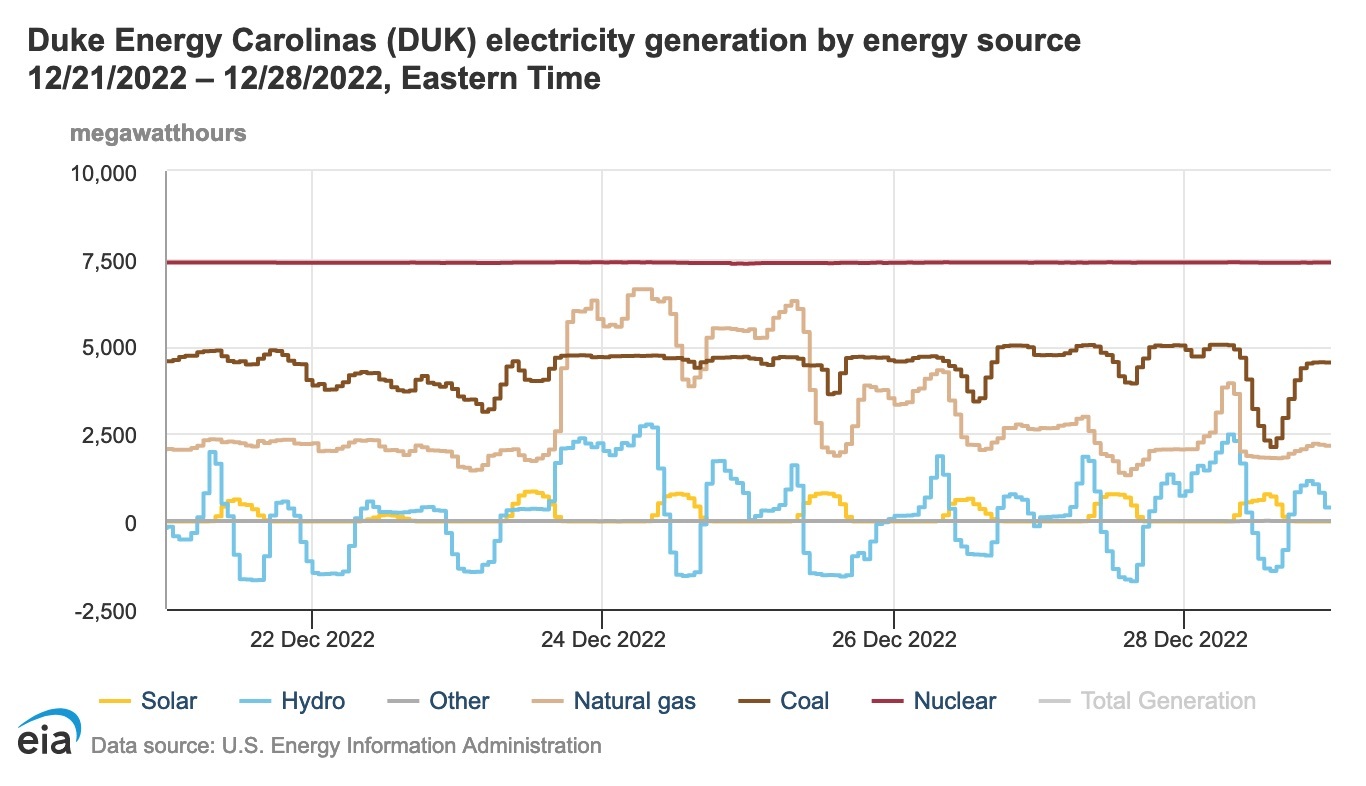
Beyond the obvious — that nuclear is the most efficient, reliable source of electricity, which also happens to be a zero-emissions source — our scenario avoided Cooper’s preferences for intermittent solar and wind for several reasons. Solar and wind:
- are extremely expensive
- require enormous swaths of land
- are intermittent and unreliable (they are at the mercy of nature; at best, solar can produce for less than half a 24-hour day)
- require backup generation for other times (adding to their expense) — and the backup source is invariably a source of carbon dioxide emissions
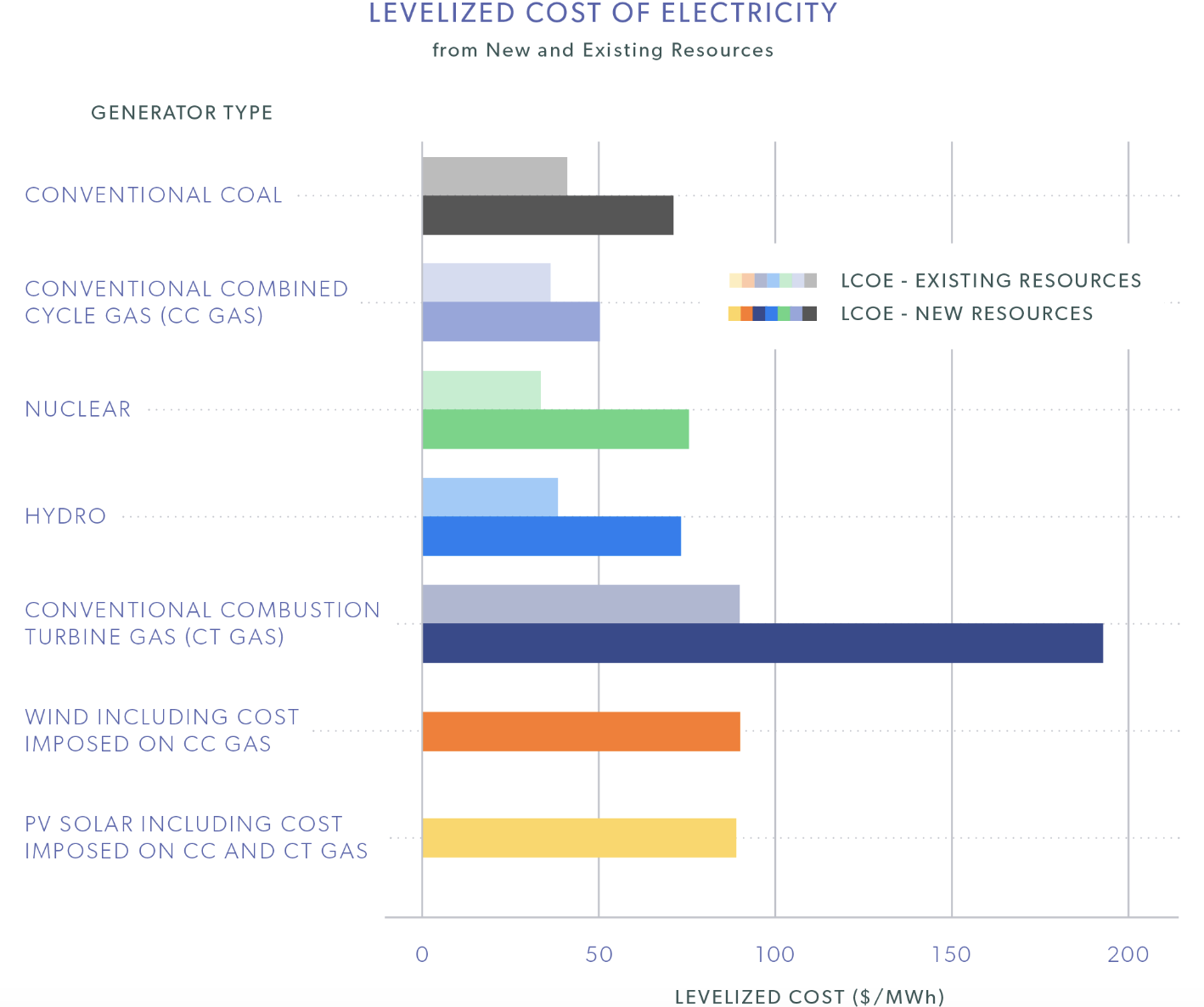
Source: Institute for Energy Research
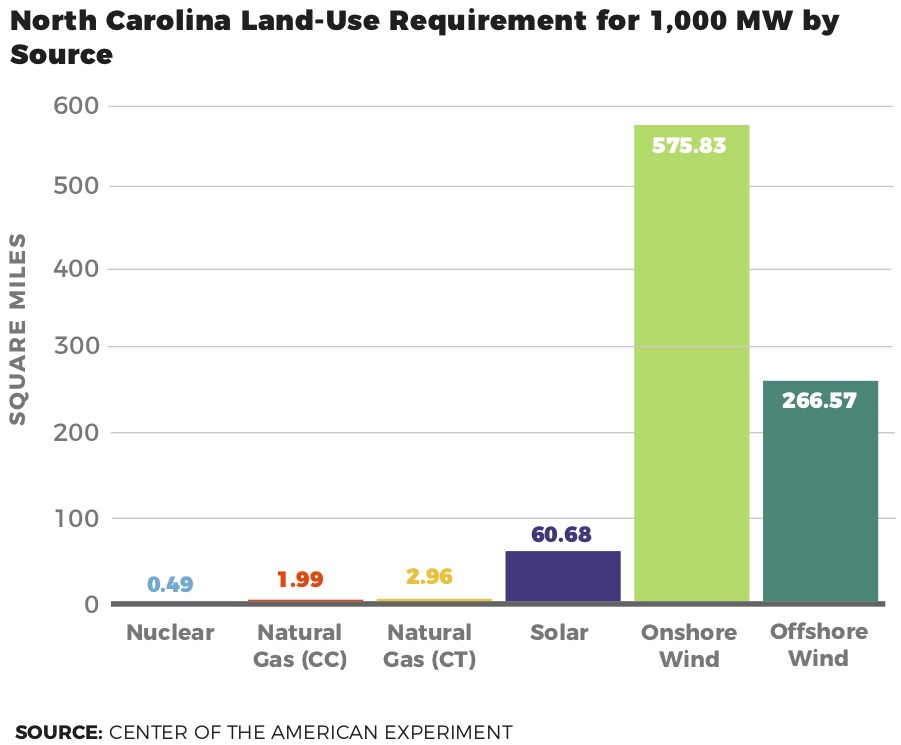
I have long questioned why state law excludes nuclear from its list of “renewable” energy sources. A decade ago, in a report on the state’s renewable energy portfolio standard (REPS), I pointed out that “nuclear, which emits no carbon dioxide, sulfur dioxide, or nitrogen oxides, is expressly listed as an unapproved [renewable energy] source.” It seemed a glaring flaw.
That flaw would be remedied in Senate Bill 678. In its second edition as of this writing, SB 678 would rename the REPS the “Clean Energy Portfolio Standard (CEPS),” and it would add “nuclear energy resources, including an uprate to a nuclear energy facility” as well as (nuclear) “fusion energy” to the definition of “clean energy resource.”
Carolina Journal has a story on SB 678 — sponsored primarily by Sens. Paul Newton, R-Cabarrus; Buck Newton, R-Wilson; and Dave Craven, R-Randolph; with several cosponsors — and the importance of those changes.
My colleague André Béliveau spoke in favor of the change, pointing out that, “Any endeavor seeking to lower carbon emissions while also seeking to maintain the reliability of any energy grid must have nuclear as part of the mix. Adding nuclear power to the legal definition of clean energy is a great next step.”


